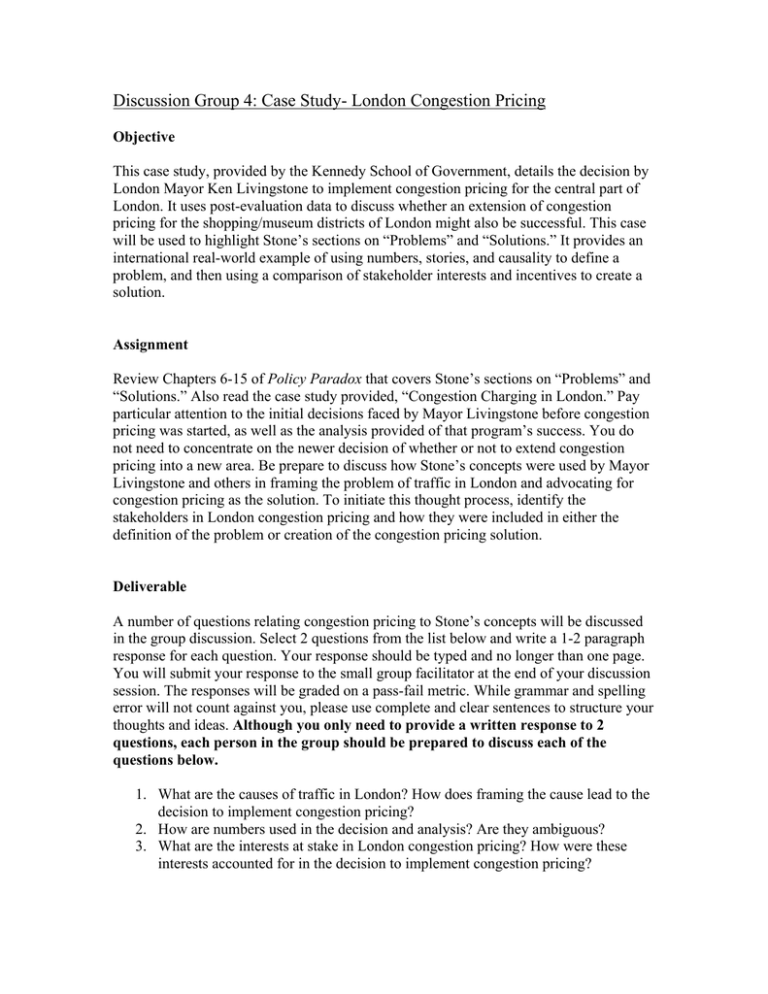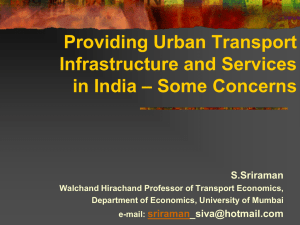Discussion Group 4: Case Study- London Congestion Pricing
advertisement

Discussion Group 4: Case Study- London Congestion Pricing Objective This case study, provided by the Kennedy School of Government, details the decision by London Mayor Ken Livingstone to implement congestion pricing for the central part of London. It uses post-evaluation data to discuss whether an extension of congestion pricing for the shopping/museum districts of London might also be successful. This case will be used to highlight Stone’s sections on “Problems” and “Solutions.” It provides an international real-world example of using numbers, stories, and causality to define a problem, and then using a comparison of stakeholder interests and incentives to create a solution. Assignment Review Chapters 6-15 of Policy Paradox that covers Stone’s sections on “Problems” and “Solutions.” Also read the case study provided, “Congestion Charging in London.” Pay particular attention to the initial decisions faced by Mayor Livingstone before congestion pricing was started, as well as the analysis provided of that program’s success. You do not need to concentrate on the newer decision of whether or not to extend congestion pricing into a new area. Be prepare to discuss how Stone’s concepts were used by Mayor Livingstone and others in framing the problem of traffic in London and advocating for congestion pricing as the solution. To initiate this thought process, identify the stakeholders in London congestion pricing and how they were included in either the definition of the problem or creation of the congestion pricing solution. Deliverable A number of questions relating congestion pricing to Stone’s concepts will be discussed in the group discussion. Select 2 questions from the list below and write a 1-2 paragraph response for each question. Your response should be typed and no longer than one page. You will submit your response to the small group facilitator at the end of your discussion session. The responses will be graded on a pass-fail metric. While grammar and spelling error will not count against you, please use complete and clear sentences to structure your thoughts and ideas. Although you only need to provide a written response to 2 questions, each person in the group should be prepared to discuss each of the questions below. 1. What are the causes of traffic in London? How does framing the cause lead to the decision to implement congestion pricing? 2. How are numbers used in the decision and analysis? Are they ambiguous? 3. What are the interests at stake in London congestion pricing? How were these interests accounted for in the decision to implement congestion pricing? 4. What options were considered for alleviating traffic? How would you categorizing these using Stone’s definition of inducements?



